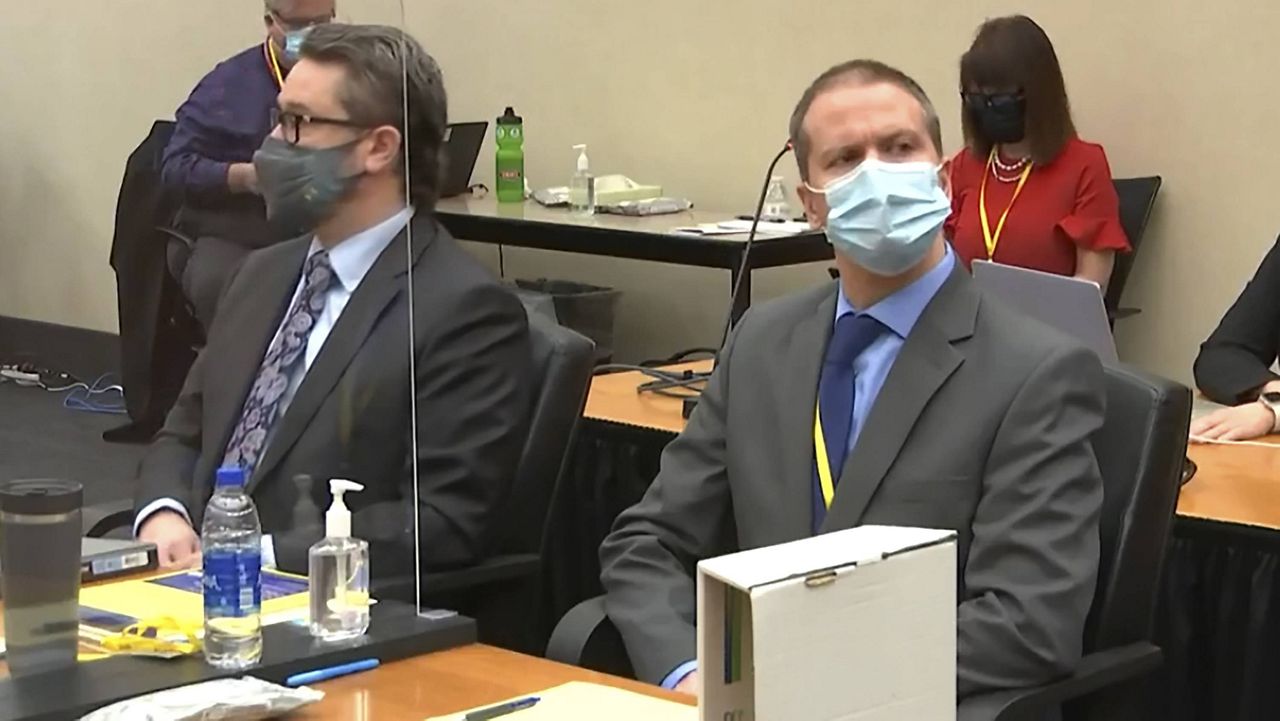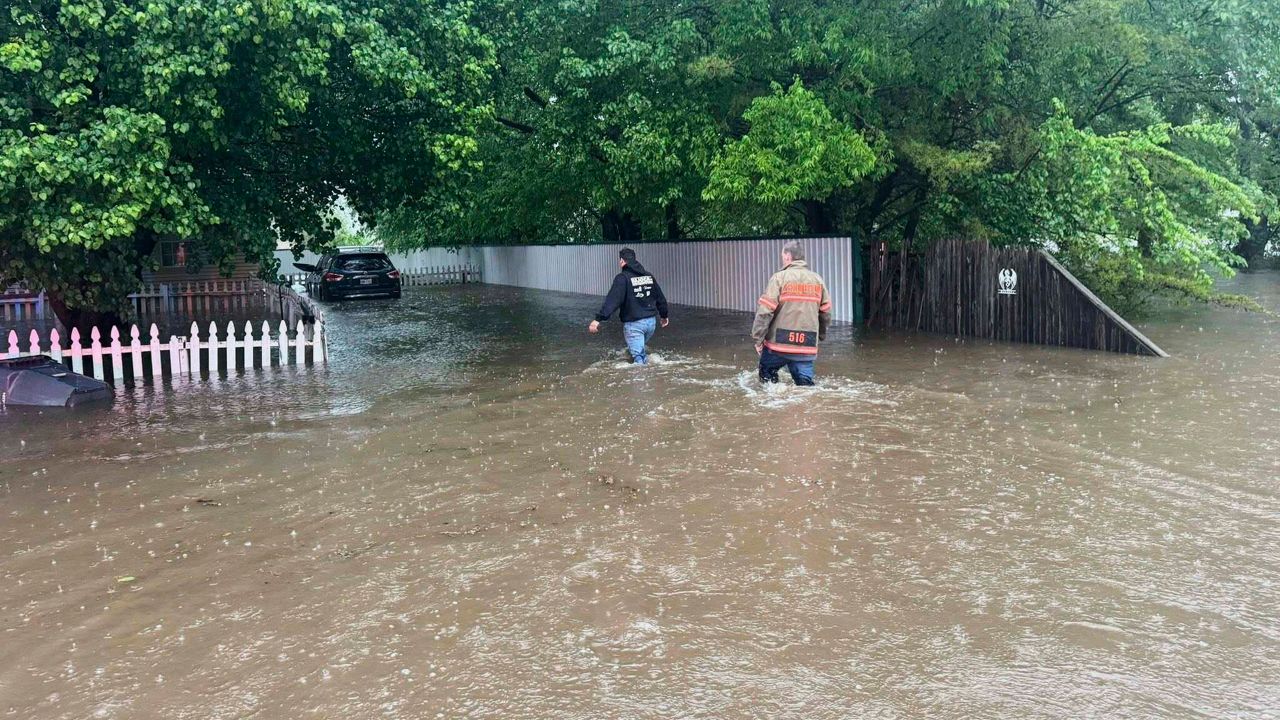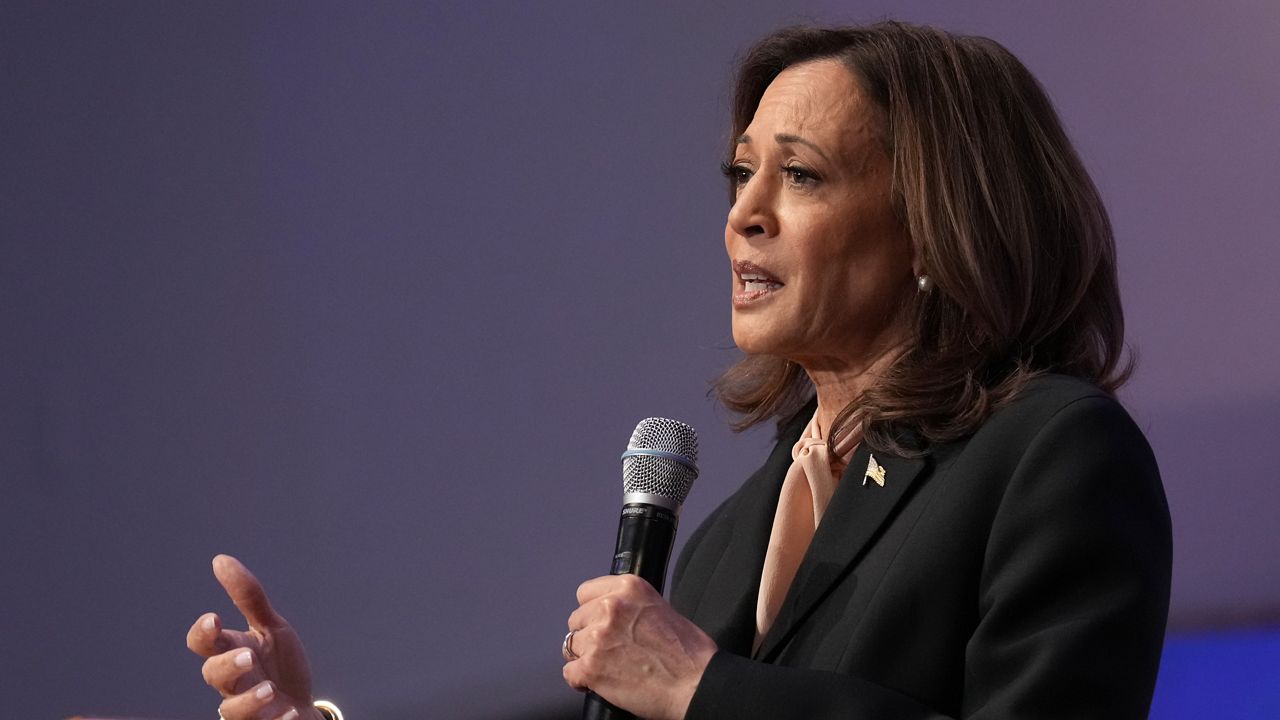The former Minneapolis police officer charged with killing George Floyd went on trial Monday, with prosecutors promptly showing the jury the video of Derek Chauvin pressing his knee on the Black man's neck for several minutes as onlookers yelled at Chauvin to get off and Floyd gasped that he couldn't breathe.
What You Need To Know
- The trial for Derek Chauvin, the former Minneapolis police officer charged with killing George Floyd, began Monday
- Prosecutor Jerry Blackwell told jurors that Chauvin "didn’t let up, he didn’t get up” even after Floyd said 27 times that he couldn’t breathe and went motionless.
- Blackwell showed the video to the jury during his opening statements, as legal experts had predicted
- Defense attorney Eric Nelson countered by arguing that Chauvin arrived to assist other officers who were struggling to get Floyd into a squad car
In opening statements, prosecutor Jerry Blackwell told the jury that the number to remember was 9 minutes, 29 seconds — the amount of time Chauvin had Floyd pinned to the pavement with his knee last May in the case that triggered scattered violence and a national reckoning over racial injustice.
The white officer “didn’t let up, he didn’t get up,” even after a handcuffed Floyd said 27 times that he couldn’t breathe and went motionless, Blackwell said.
“He put his knees upon his neck and his back, grinding and crushing him, until the very breath -- no, ladies and gentlemen -- until the very life was squeezed out of him,” the prosecutor said.
Chauvin attorney Eric Nelson countered by arguing: “Derek Chauvin did exactly what he had been trained to do over his 19-year career."
Floyd was resisting arrest, and Chauvin arrived to assist other officers who were struggling to get Floyd into a squad car as the crowd around them grew larger and more hostile, Nelson said.
The defense attorney also disputed that Chauvin was to blame for Floyd's death.
Floyd had none of the telltale signs of asphyxiation and had fentanyl and methamphetamine in his system, Nelson said. He said Floyd's drug use combined with his heart disease and high blood pressure, as well as the adrenaline flowing through his body, to cause his death from a heart rhythm disturbance.
“There is no political or social cause in this courtroom,” Nelson said. “But the evidence is far greater than 9 minutes and 29 seconds.”
The medical examiner’s autopsy noted fentanyl and methamphetamine in Floyd’s system but listed his cause of death as “cardiopulmonary arrest, complicating law enforcement subdual, restraint, and neck compression.”
Chauvin, 45, is charged with unintentional second-degree murder, third-degree murder and manslaughter.
The widely seen video sparked outrage across the U.S. and led to widespread protests and unrest, along with demands that the country confront racism and police brutality. Confederate statues and other symbols were pulled down around the U.S., and activists demanded that police department budgets be cut or overhauled.
Playing the footage during opening statements underscored the central role video will play in the case. It was posted to Facebook by a bystander who witnessed Floyd's arrest after he was accused of trying to pass a counterfeit $20 bill at a convenience store.
“My stomach hurts. My neck hurts. Everything hurts,” Floyd says, and “I can’t breathe officer.” Onlookers repeatedly shout at the officers to get off the 46-year-old Floyd. One woman, identifying herself as a city Fire Department employee, shouts at Chauvin to check Floyd’s pulse.
Jurors watched intently as the video played on multiple screens, with one drawing a sharp breath as Floyd said he couldn’t breathe. Chauvin sat calmly during the opening statements and took notes, looking up at the video periodically.
The timeline differs from the initial complaint filed last May by prosecutors, who said Chauvin held his knee on Floyd’s neck for 8 minutes, 46 seconds. In the following weeks, demonstrators staged “die-ins” lasting 8 minutes, 46 seconds, and 8:46 became a rallying cry in the case. The time was revised during the course of the investigation.
Fourteen people in the jury box will hear the case — eight of them white, six of them Black or multiracial, according to the court. Two of the 14 will be alternates. The judge has not said which ones will be alternates and which ones will deliberate the case.
Legal experts fully expected prosecutors to play the video to the jury early on.
“If you’re a prosecutor you want to start off strong. You want to frame the argument -- and nothing frames the argument in this case as much as that video,” said Jeffrey Cramer, a former federal prosecutor and managing director of Berkeley Research Group in Chicago.
Blackwell said bystander witnesses would include a Minneapolis Fire Department first responder who wanted to administer aid. He said Chauvin pointed Mace at her.
“She wanted to check on his pulse, check on Mr. Floyd’s well-being,” Blackwell said. “She did her best to intervene. When she approached Mr. Chauvin …. Mr. Chauvin reached for his Mace and pointed it in her direction. She couldn’t help.”
The prosecution so far has called two witnesses, the first of which was Jena Scurry, a Minneapolis 911 dispatcher who watched Floyd’s arrest unfold on a police camera from her office.
While Scurry said she continued to take calls as she watched the incident unfold, she told the court: “My instincts were telling me that something was wrong.” Those feelings intensified when she saw officers placing Floyd in the back of a police car, before subsequently removing him again, all without requesting backup, she testified.
Scurry said Chauvin remained physically on top of Floyd for so long that she thought the camera feed had frozen.
"It had not changed,” Scurry said of the dispatch video of Floyd’s arrest. “It was long enough, long enough that I could look back multiple times … I first asked if the screens had frozen because it hadn't changed."
Scurry said she "took that instinct and called the sergeant” who oversees police matters.
But the defense pointed out that Scurry is not an expert on the police department’s use-of-force policies, and the witness admitted she had only seen such scenes play out a few times on live screens during her time as a dispatch officer.
The prosecution’s second witness, 23-year-old Alisha Oyler, was working at the Speedway across the street from where police were called on May 25 of last year. Oyler said she noticed the police “messing with someone” as she worked the cash register, saying she recorded a subsequent interaction between Floyd, Chauvin, and other police officers. In total, Oyler recorded seven videos of the altercation.
Oyler was visibly nervous during the course of her testimony, saying she could not recall several specific details of the event, as it had "been so long." The trial took a brief break before Oyler was questioned by the defense.
The third and final witness of the day offered what was likely the most compelling testimony for the prosecution on Monday. Derek Williams II, a mixed martial arts expert who had previously worked alongside the Minneapolis police during his years in private security, was one of the loudest voices in eyewitness video telling officers to check Floyd’s pulse.
Williams also deemed Chauvin’s hold on Floyd a “blood choke.”
“He was going through distress because of the knee,” Williams said of Floyd. “And he vocalized it, that ‘I can’t breathe,’ ‘I need to get up,’ and ‘I’m sorry.’ And his eyes slowly rolled to the back of his head and you see the blood coming out of his nose. And you heard (Floyd) tell them, before he stopped speaking, that ‘my stomach hurts.’”
Williams recalled that Floyd’s voice grew thicker as his breathing became more labored, and he eventually stopped moving. He said he saw Floyd’s eyes roll back in his head, likening the sight to fish he had caught earlier that day.
Williams said he saw Floyd “slowly fade away ... like the fish in the bag.”
About a dozen people chanted and carried signs outside the courthouse as Floyd family attorney Ben Crump, the Rev. Al Sharpton and members of the Floyd family went inside. The group also carried a makeshift coffin with flowers on top and held a moment of silence for 8 minutes, 46 seconds.
Crump said the trial would be a test of “whether America is going to live up to the Declaration of Independence.” And he blasted the idea that it would be a tough test for jurors.
“For all those people that continue to say that this is such a difficult trial, that this is a hard trial, we refute that," he said. "We know that if George Floyd was a white American citizen, and he suffered this painful, tortuous death with a police officer’s knee on his neck, nobody, nobody, would be saying this is a hard case.”
The trial is expected to last about four weeks at the courthouse in downtown Minneapolis, which has been fortified with concrete barriers, fences and barbed and razor wire. City and state leaders are determined to prevent a repeat of the riots that followed Floyd’s death, and National Guard troops have already been mobilized.
The key questions will be whether Chauvin caused Floyd’s death and whether his actions were reasonable.
For the unintentional second-degree murder charge, prosecutors have to prove Chauvin’s conduct was a “substantial causal factor” in Floyd’s death, and that Chauvin was committing felony assault at the time. For third-degree murder, they must prove that Chauvin’s actions caused Floyd’s death and were reckless and without regard for human life.
The manslaughter charge requires proof that Chauvin caused Floyd’s death through negligence that created an unreasonable risk.
Unintentional second-degree murder is punishable by up to 40 years in prison, and third-degree carries up to 25 years, but sentencing guidelines suggest that Chauvin would face 12 1/2 years in prison if convicted on either charge. Manslaughter is punishable by up to 10 years.
The Associated Press contributed to this report.








